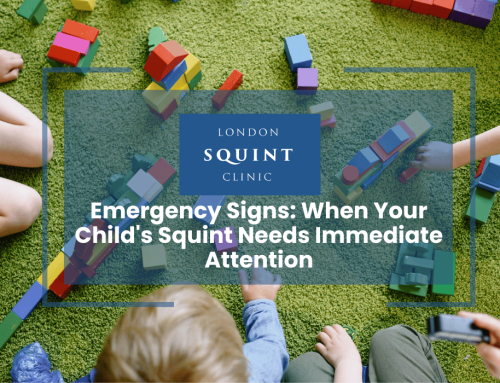How to Help Your Child Cope with Squint Treatment and Recovery
Supporting Your Child Through the Squint Treatment Journey
Navigating the path of squint treatment can be challenging for both children and parents. By understanding the emotional impact, preparing for surgery, encouraging eye patch compliance, engaging in fun recovery activities, supporting adjustment to glasses, providing post-surgery care, building a strong family support system, and celebrating milestones, you can make a significant difference in your child’s experience. Remember, your love, patience, and unwavering support are the most valuable tools in helping your child overcome the challenges of squint treatment and emerge with improved vision and a brighter outlook on life.
Here is the blog post content with the required sections and formatting:
Table of Contents
- Understanding the Emotional Impact of Squint Treatment on Children
- Preparing Your Child for Squint Surgery: What to Expect
- Effective Strategies for Encouraging Eye Patch Compliance
- Engaging in Fun Activities During Squint Treatment Recovery
- Supporting Your Child’s Adjustment to Wearing Glasses
- Navigating the Challenges of Post-Squint Surgery Care at Home
- Building a Strong Family Support System Throughout Strabismus Treatment
- Celebrating Milestones and Successes in Your Child’s Squint Journey
Understanding the Emotional Impact of Squint Treatment on Children
Squint treatment, whether through eye patching, glasses, or surgery, can have a significant emotional impact on children. They may feel self-conscious about their appearance, experience frustration with the treatment process, or struggle to cope with the changes in their daily routine. As a parent, it’s essential to recognise these emotional challenges and provide your child with the support and understanding they need.
Children may express their emotions in various ways, such as becoming withdrawn, acting out, or expressing fears about the treatment. Validate their feelings and reassure them that it’s normal to feel this way. Encourage open communication and create a safe space for them to express their concerns. Emphasise that the treatment is temporary and will help improve their vision in the long run.
Preparing Your Child for Squint Surgery: What to Expect
If your child requires squint surgery, proper preparation can help alleviate their anxiety and ensure a smoother experience. Begin by explaining the procedure in age-appropriate terms, focusing on the positive outcomes rather than the technical details. Reassure them that they will be asleep during the surgery and won’t feel any pain.
In the days leading up to the surgery, maintain a calm and positive atmosphere at home. Encourage your child to ask questions and express their concerns. Pack a comfort item, such as a favourite stuffed animal or blanket, to bring to the hospital. On the day of the surgery, remain composed and confident, as your child will take cues from your behaviour. Trust in the expertise of the medical team and communicate any specific concerns you may have.
Effective Strategies for Encouraging Eye Patch Compliance
Eye patching is a common treatment for amblyopia, often associated with squint. However, getting children to consistently wear their eye patch can be a challenge. To encourage compliance, make the process fun and engaging. Allow your child to decorate their eye patches with stickers or drawings, turning it into a creative activity. Set up a reward system, such as a sticker chart, to celebrate their progress and motivate them to keep going.
Establish a consistent routine for eye patching, integrating it into their daily activities. Lead by example and wear an eye patch yourself during playtime to normalise the experience. Engage in activities that don’t rely heavily on binocular vision, such as listening to audiobooks, playing with tactile toys, or enjoying music. For more tips on improving compliance, refer to our article on getting children to cooperate with amblyopia treatment.
Engaging in Fun Activities During Squint Treatment Recovery
During the recovery period after squint surgery or while undergoing other treatments, it’s important to keep your child engaged and entertained. Plan a variety of fun activities that don’t strain their eyes, such as board games, puzzles, or crafts. Encourage storytelling or imaginative play to stimulate their creativity. Organize gentle outdoor activities, like nature walks or picnics, to provide a change of scenery and fresh air.
Maintain a balance between rest and activity, ensuring your child gets enough sleep to aid in their recovery. Limit screen time and focus on activities that promote bonding and relaxation. Involve siblings or close friends in the activities to provide a sense of normalcy and social support. Remember to adapt the activities to your child’s individual needs and preferences, keeping their comfort and enjoyment a top priority.
Supporting Your Child’s Adjustment to Wearing Glasses
If your child requires glasses as part of their squint treatment, helping them adjust to wearing them consistently can be a process. Start by involving your child in choosing their frames, allowing them to express their personal style. Opt for comfortable, well-fitting frames that stay securely in place. Gradually increase the amount of time they wear their glasses each day, starting with short periods and building up to full-time wear.
Address any concerns your child may have about their appearance or how others might perceive them. Emphasize the positive aspects of wearing glasses, such as improved vision and the ability to engage in activities they enjoy. If your child experiences discomfort or vision issues with their new glasses, consult with their eye doctor to ensure a proper fit and prescription. Celebrate their progress and offer praise for their commitment to wearing their glasses consistently.
Navigating the Challenges of Post-Squint Surgery Care at Home
Caring for your child at home after squint surgery can present unique challenges. Follow the post-operative instructions provided by your child’s surgeon, including administering prescribed medications, using eye drops, and attending follow-up appointments. Keep your child’s environment clean and comfortable, with a designated space for rest and recovery.
Monitor your child for any signs of complications, such as excessive pain, redness, or discharge from the eye. Contact your child’s doctor immediately if you notice any concerning symptoms. Assist your child with daily tasks, such as dressing and bathing, while they adjust to their temporary vision limitations. Provide emotional support and reassurance throughout the recovery process, acknowledging their frustrations and celebrating their progress.
Building a Strong Family Support System Throughout Strabismus Treatment
A strong family support system is crucial for children undergoing strabismus treatment. Involve siblings in the process by educating them about the condition and encouraging them to be understanding and helpful. Create a positive and inclusive atmosphere at home, where your child feels loved and accepted regardless of their visual differences.
Seek support from extended family members, friends, or support groups who can offer encouragement and practical assistance. Share your experiences and learn from others who have navigated similar challenges. Prioritize self-care for yourself and your partner, as caring for a child with strabismus can be emotionally and physically demanding. By building a strong support network, you’ll be better equipped to provide the love, patience, and understanding your child needs throughout their treatment journey.
Celebrating Milestones and Successes in Your Child’s Squint Journey
Celebrating milestones and successes, no matter how small, is an important aspect of supporting your child during their squint treatment. Acknowledge their bravery and resilience in the face of challenges, and praise their efforts in following their treatment plan. Create a visual chart or journal to track their progress, allowing them to see how far they’ve come.
Plan special activities or rewards to mark significant achievements, such as completing a phase of treatment or reaching a vision improvement goal. Involve your child in choosing the celebrations, giving them a sense of control and ownership in their journey. Share their successes with family and friends, fostering a sense of pride and accomplishment. By celebrating milestones, you reinforce the importance of their hard work and dedication, motivating them to continue striving towards their vision goals.
Frequently Asked Questions
1. How can I help my child cope with the emotional challenges of squint treatment?
To help your child cope with the emotional challenges of squint treatment, validate their feelings and provide a safe space for them to express their concerns. Encourage open communication, emphasize the temporary nature of the treatment, and focus on the positive outcomes. Maintain a calm and supportive atmosphere at home, and engage in fun activities to boost their mood and self-esteem.
2. What should I expect when preparing my child for squint surgery?
When preparing your child for squint surgery, explain the procedure in age-appropriate terms, focusing on the positive outcomes. Reassure them that they will be asleep during the surgery and won’t feel any pain. Pack a comfort item for them to bring to the hospital, and maintain a calm and positive atmosphere at home. Trust in the expertise of the medical team and communicate any specific concerns you may have.
3. How can I encourage my child to wear their eye patch consistently?
To encourage eye patch compliance, make the process fun and engaging by allowing your child to decorate their patches and setting up a reward system. Establish a consistent routine, lead by example, and engage in activities that don’t rely heavily on binocular vision. Refer to our article on getting children to cooperate with amblyopia treatment for more tips.
4. What activities can I do with my child during squint treatment recovery?
During squint treatment recovery, engage your child in fun activities that don’t strain their eyes, such as board games, puzzles, crafts, storytelling, or imaginative play. Organize gentle outdoor activities, like nature walks or picnics, and maintain a balance between rest and activity. Adapt the activities to your child’s individual needs and preferences, keeping their comfort and enjoyment a top priority.
5. How can I support my child’s adjustment to wearing glasses?
To support your child’s adjustment to wearing glasses, involve them in choosing their frames and opt for comfortable, well-fitting options. Gradually increase the amount of time they wear their glasses each day, and address any concerns they may have about their appearance. Emphasize the positive aspects of wearing glasses and celebrate their progress in consistently wearing them.
6. What should I do if I notice complications after my child’s squint surgery?
If you notice any signs of complications after your child’s squint surgery, such as excessive pain, redness, or discharge from the eye, contact your child’s doctor immediately. Follow the post-operative instructions provided by the surgeon, keep your child’s environment clean and comfortable, and assist them with daily tasks while they adjust to their temporary vision limitations.
7. How can I build a strong family support system during my child’s strabismus treatment?
To build a strong family support system during your child’s strabismus treatment, involve siblings by educating them about the condition and encouraging them to be understanding and helpful. Create a positive and inclusive atmosphere at home, and seek support from extended family members, friends, or support groups. Prioritize self-care for yourself and your partner to better equip you to provide the love, patience, and understanding your child needs throughout their treatment journey.
Find out if you are suitable for Double Vision Treatment
Not everyone is eligible for double vision surgery.
Find out if you could benefit from this life-changing surgery by taking the quick self-suitability quiz below:
Our most popular procedures

Hello, I’m Nadeem Ali
I’m one of the few eye surgeons in the world with 100% focus on Squint and Double Vision Surgery.
I have 24 years of eye surgery experience, and worked for 13 years as a Consultant at London’s renowned Moorfields Eye Hospital.
In 2023, I left the NHS to focus fully on treating patients from across the world at the London Squint Clinic. You can read more about me here.
There’s lots of information on the website about: squint surgery, double vision surgery and our pricing.
The most rewarding part of my job is hearing patients tell me how squint or double vision surgery has changed their lives. You can hear these stories here.
Mr Nadeem Ali
MA MB BChir MRCOphth FRCSEd(Ophth)





